#6 – Janvier / January 2024
About Afterlife. Part Two
An exchange between Victor Burgin
and Alexander Streitberger
Alexander Streitberger: According to Barrell, the British painters of the 18th century were “committed … to a continual struggle, at once to reveal more and more of the actuality of the life of the poor, and to find more effective ways of concealing that actuality.”[1] In other words, in paintings by Constable, Gainsborough and others, behind the idyllic façade of picturesque landscape always lurks the repressive actuality of rural labourers. It seems to me that, in Afterlife, the contrast between the sinister industrial site and the sublime mountains overtly reveals the social, ecological, and technological gaps in our societies. Socially, the everyday industrial environment of the working class clashes with the Romantic sublime of a wealthy and educated elite. Ecologically, the destruction of the planet by industrial pollution destroys the terrestrial ecosystems and thus threatens both human and environmental health. Finally, technologically, the digital divide creates a gap between those who are doomed to be exposed to the increasingly life-hostile climate of planet earth, while those who have access to the digital universe of Afterlife might find a way to escape not only their bodies but also the ecological apocalypse. This is at least the sci-fi fantasy of transhumanists who consider mind uploading as a way to transcend the human body and achieve immortality. The mountain views further made me think of the aerial panorama above the mountain chain of Belledonne that appears in your eponymous projection work of 2016. For me, this work is also based on antagonisms such as life and death, human experience and drone-like automated vision, the apparently open, all-encompassing view of the panorama and the repressive surveillance system of the panopticon, and, finally, the touristic landscape and landscape as military terrain. Could you tell us a bit more about Belledonne and elaborate on its relations to Afterlife in terms of the above-mentioned issues?
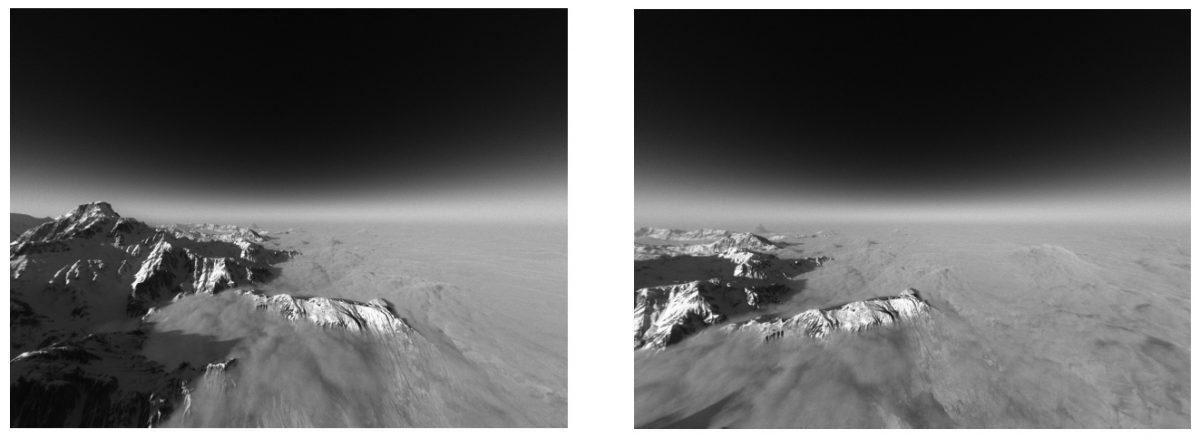

Victor Burgin: My first response is to say I don’t see any connection between the two – which is not to say there isn’t one, as you yourself see one. Yours is the external view of the critic, or historian, who sees connections of which the author of the work may be unaware – that’s to say, they are unconscious. It should be no surprise that the most anxiety provoking aspects of our present existence should make their way into dreams, and into artworks, in more or less transformed guises. This is the most fundamental relation between Belledonne and Afterlife – both works are produced into the same world. Belledonne returns us to the figure in the landscape. It takes its point of departure from a postcard from St-Hilaire-du-Touvet in southeast France, where from 1942-5 Barthes was a patient in a tuberculosis sanatorium. The postcard shows a panoramic lookout point with a view of the Belledonne mountain range in the French Alps. Some of the intertitles in the work are written as haiku, in recognition of Barthes’ interest in this form, one of them reads: “Thaw in the valley / On the road by the river / Columns of soldiers.” It was as if Barthes was isolated on an island in an ocean of war. The passage you cite from John Barrell reminds me of an observation made by the French philosopher David Lapoujade in his recent book L’Altération des Mondes (2021), in which he describes the prescient vision of the British novelist J. G. Ballard. He writes: “The future, it’s man who is no longer there, as witnessed by these abandoned zones where the end of the world has already begun. These images are strictly contemporary with the flashy images of post-industrial growth, of the fantasies of prosperity and luxury that mask them … Luxury – mortuary – has only a single function: to dissimulate.”[2] Any work of art today, indeed any activity whatsoever, takes place within this horizon – the horizon of a humanity that is potentially “no longer there.” This is such an all-pervasive obviousness that it is redundant – in art – to talk about it. (Hollywood disaster movies have been talking about it for decades, but without really believing it.) When I wrote that haiku for Belledonne I was not simply recording a past historical fact, I was acknowledging a continually present aspect of the granularity of my psychical reality, my confrontation with the real.
AS: The notion “granularity” appears recurrently in your recent writings in relation to a specific way of perceiving the world politically without blatantly pointing things out. In an interview with Hilde Van Gelder you oppose to the figure of the political artist as a “disaster tourist (…) looking for injustices to denounce” the granular-perceptual approach that explores the “trace of the political in the overlooked” within everyday life.[3] Could you elaborate on this concept of the “granular political” and the way it manifests itself in your works, especially in Afterlife?

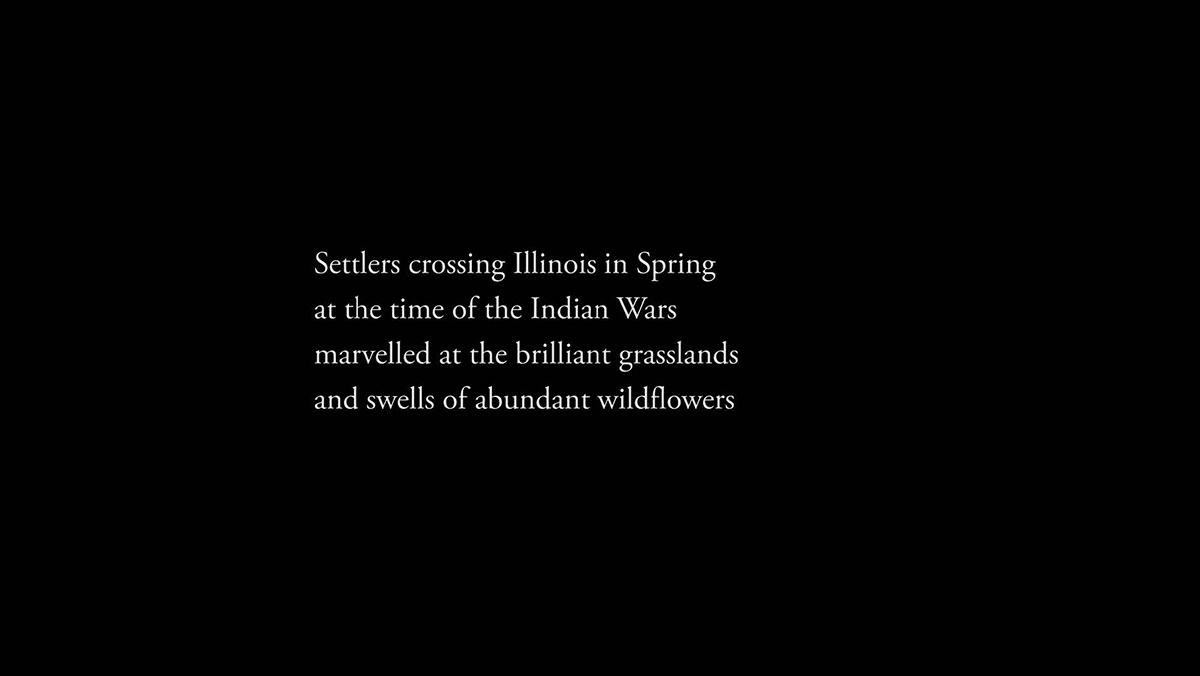
VB: I invoked the ‘Egypt’ of my childhood in terms of various sensory and psychical impressions at a transitory moment in a particular place. I’ve elsewhere cited Bonnard’s wish for his pictures to offer something like the fleeting experience of entering an unfamiliar room, in which one sees everything at once, but nothing in particular. An effect of light, a feeling of anticipation, a change of temperature, a movement of foliage beyond a window, … and perhaps an involuntary mental image, or mood, related to a trace, albeit faint, of conflict and injustice. This ‘trace’ might be of the material kind that interested Hilde Van Gelder in my work for Toulouse, the unexplained appearance of the painting of a fille de service amongst portraits of the powerful; or it might take the form of a historical fact brought to mind by association with the place in which one stands. For example, in my projection work Prairie the place is the Mies van der Rohe complex that today occupies the site of the African American district that was destroyed to make way for it and, further back in the sedimentary history of the place, the expunged presence of the Native American peoples who first occupied the site. ‘All at the same time’ as I was shown around the site – an aching knee, a feeling of anger, a shadow on the lawn, the sound of traffic, … all of this constitutes what I’ve called the ‘granularity’ of my confrontation with the real of perception at a particular place and time. I cannot elaborate on the ‘concept’ because there is no concept, there is rather a psychical reality that I can only try, impossibly, to represent. If we were nevertheless to retain the word ‘elaboration’ then we might say that the artwork itself is the elaboration, in the psychoanalytic sense of a ‘working through’. The real is without form. It is in the ‘elaboration’, the giving form, that we encounter such things as the European landscape tradition of which we’ve spoken, and its concomitant perspectival system; language, and its various schemas – such as the haiku in Belledonne, which returns in my more recent work Young Oaks in the form of a verse, again a haiku, composed by the black American author Richard Wright. I produced Young Oaks for a New York gallery at the time of the Black Lives matter demonstrations and at the height of the Covid lockdown. The work is composed of images from a virtual camera that circulates between four rooms without issue, there’s no way out of them. A mise-en-scène of confinement, an inscription of a Black American voice, these are particles in the granularity of my confrontation with the real at the time I was making the work. The real is without form and also without time. I think now of my written pieces from the 1970s, those recursive lists of sentences that include the phrase: the present moment and only the present moment. It is as if, in my subsequent work, I’ve tried to expand upon this present moment in an ‘elaboration’ in which the atemporal becomes temporalised – hence the recursivity, and the form of the loop in my projection works. But perhaps it is worth my emphasising, to avoid any possible confusion, that I do not claim that attention to the ‘granular perceptual’ is somehow a more effective form of political action. This would be as ridiculous as it is to claim that self-styled ‘political art’ has an actual political effect in the world – I elaborate on this in the exchange with Hilde Van Gelder to which you’ve referred. What is rather at issue is the specificity of the political in its various registers. I consider my only substantive political engagement to be that of a citizen. When I vote, join a demonstration, or support a strike, the fact that I happen to be an artist is of no more relevance than the fact that I’m right-handed. The politics of my art inhabits a different register. As Rancière puts it, art is not apolitical but it has its own ‘meta-politics’,[4] a view consistent with that of Marx and Engels before him, who saw no value in Tendenzkunst – art with a manifest political content. In terms of the chiasmus I coined decades ago, and seem doomed endlessly to repeat, the ‘meta-politics’ specific to art is not a matter of the representation of politics, but of the politics of representation.

AS: This shift of focus from the representation of politics to the politics of representation can be observed in your work as early as in the late 1970s. Works like US 77 (1977) are not concerned with denouncing specific political issues or persons by depicting them, but with the ideological structures that inform representation as a site of political engagement. One of the panels from US 77 seems to allude to this entanglement of ideology and representation by showing an almost never-ending perspectival view down a road in a desert, while the text printed on the photograph reminds us that the present is always ideologically filtered through the past, “the tradition of the race and of the people”. The title, “False perspective”, refers to both, the problematic belief in a pure, genuine experience of our present reality, and the role of one-point perspective within Western societies since the Renaissance. Far from offering a neutral view onto the world, linear perspective is here understood as a social and ideological construct that subjects our perception of the world to the laws of geometry and optics. In Young Oaks, Alberti’s vision of the painting as an open window through which the world is seen, transforms into a series of doors which, as you mention, do not open onto an exterior world, but onto a confined virtual world that reflects the psycho-sociological reality in which we found ourselves during the last year due to the COVID-19 pandemic. Yet, beyond this allusion to the granular political of our present situation, it seems to me that the way how the doors open onto almost identical rooms also connects a specific tradition of Dutch painting – as opposed to Italian perspective painting – with the logic of video games in which one passes from one room to another, discovering thus successively the various areas and levels of the game. In his treatise on painting, Lof der Schilderkunst (Leiden, 1642), Philips Angel replaced the pictorial metaphor of the window by the “doorkijkje” (view through a door). In some of Samuel van Hoogstraten’s interior scenes, in fact, the domestic setting of the Dutch bourgeoisie is conceived of as a space of representation by means of a series of door-frames. Hammershøi’s domestic interiors, which inspired the setting of Young Oaks, obviously were influenced by this tradition. The above-mentioned link with the virtual reality of the video game can be established through what Benjamin called “the phantasmagorias of the interior – which, for the private man, represents the universe. In the interior, he brings together the far away and the long ago. His living room is a box in the theater of the world.”[5] Today, the virtual space of the computer and the Internet has become our theater of a phantasmagoric world from which material reality is increasingly foreclosed. As early as 1984, science fiction writer William Gibson defined, in his novel Neuromancer, the cyberspace as “a consensual hallucination experienced daily by billions of legitimate operators” within computer networks.[6] The ultimate consequence of this process is described in Afterlife: the detachment from the organic world by the creation of “a perfect digital copy of the mind” inhabiting a virtual “multiverse containing an infinity of possible worlds”. Yet, it seems to me that Young Oaks suggests that painting, as a space of reflection and contemplation, functions as both a model for and a form of resistance to the illusionary worlds of computer simulation and the “interactive” but preformatted and predetermined narratives of video games. Could you say something about this tension in your work between the history of painting (and its specificities in terms of representation and reception) and a particular tradition of science fiction and speculative fantasies, invoking entire artificial worlds and disembodied consciousnesses of various kinds, as they can be found in novels of authors such as Adolfo Bioy Casares, Stanislaw Lem, Philipp K. Dick, and William Gibson?
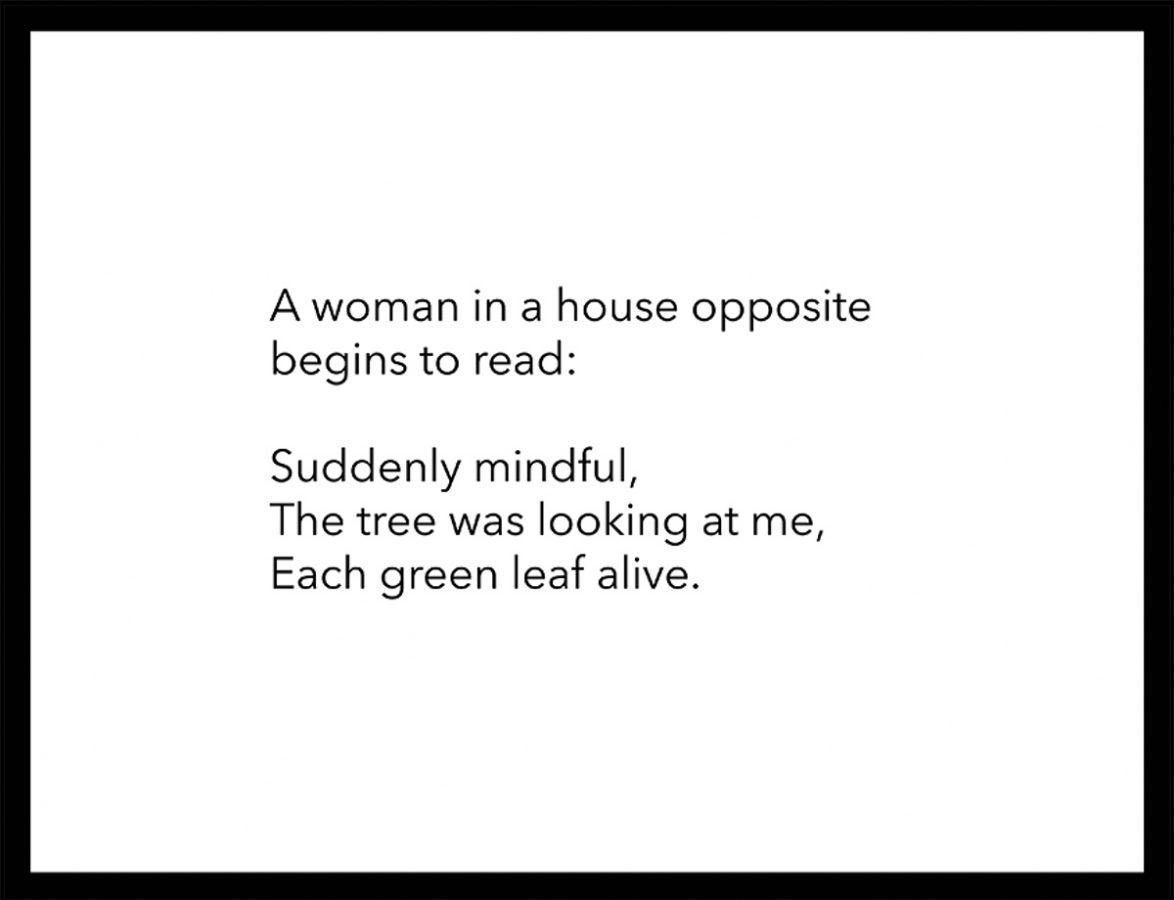
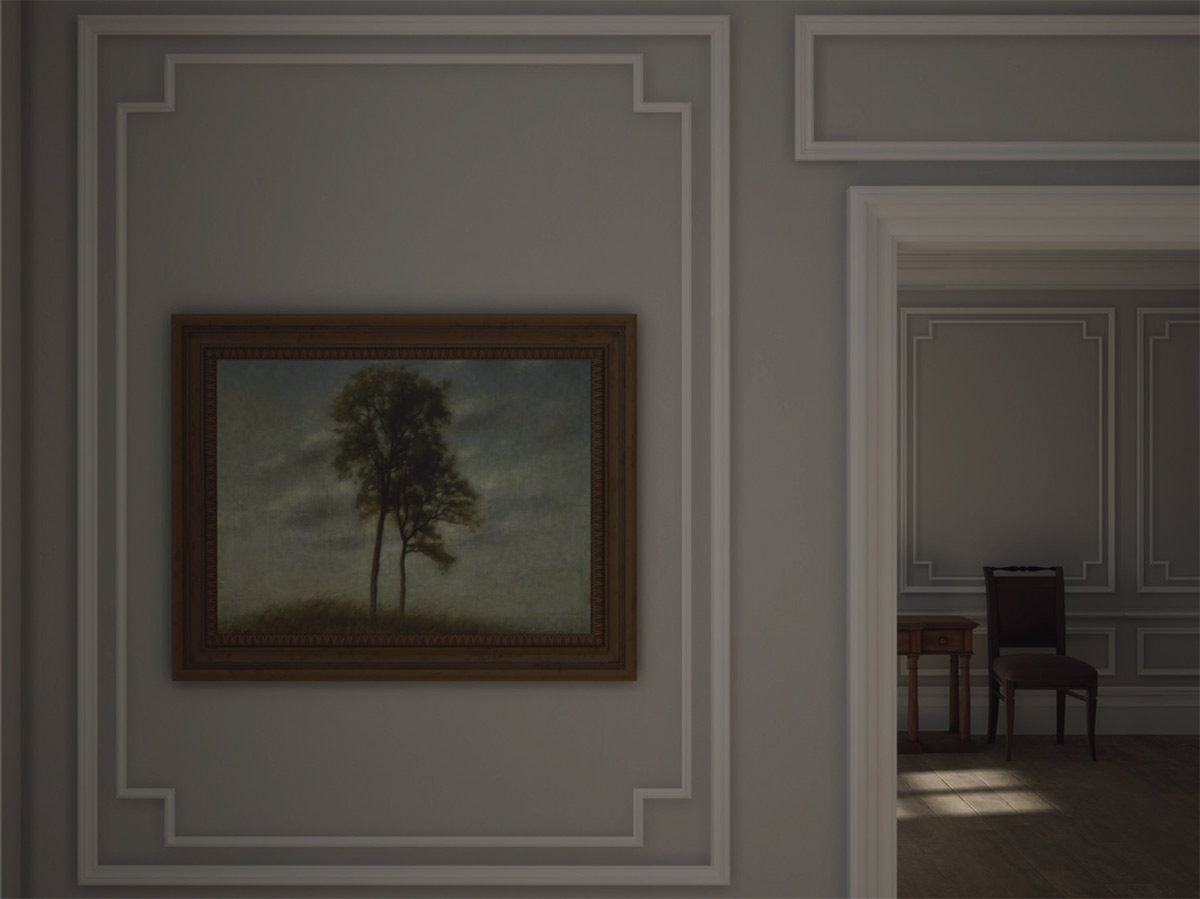

VB: What first occurs to me in response to what you say is that painting and writing are fundamentally solitary occupations. The image of the painter in the studio, like that of the writer at her or his desk, is of an individual before a blank page – canvas or paper – upon which an imaginary world may take the form of a material inscription. From my beginning as a painter I have taken a detour through photography and video – which obliged me to seek my subject matter in the external world – to return to a sedentary position in front of a screen. The unreal worlds that may be created by science fiction writers – worlds in which the physical laws of our everyday reality no longer apply – may be painted or may be modelled in computer space. This would be the first, most obvious, relation I might make between the spheres of painting, writing and computer modelling. When I think of painting in relation to videogames what first comes to mind, irrationally, is the experience of visiting museums. The passage from one gallery to another suggests the passage between levels in a videogame. One passes from the Medieval collection, to the Renaissance gallery, to Baroque, to Romantic … Each gallery is its own world, where the differences between works is less striking than the similarities, and yet they are all part of the same ‘game’, the same story, which is the history of painting. The Modern collection was once last in line, as the rule of the game is that the levels be historically organised, thereby implying a Greenbergian modernist scenario of progression towards the victory of pictorial art severed from any reference other than to itself – all obstacles surmounted, Game Over! According to one’s perspective, the Contemporary gallery may now be seen as either troubling this progression or as perfectly coherent with it, as the penultimate stage of the triumph of neo-liberal culture at the ‘end of history’ in that ultimate de facto gallery which is the Museum shop! But in the more fundamental terms of my working experience of producing art I am less aware of a relation to videogames as such than of the relation to the software used to produce videogames – the ‘game engine’. My own experience of working with a game engine to produce images, still or moving, is closely similar to a certain experience of painting – in which one moves hesitantly towards the realisation of an imprecise mental image through a process of false starts, corrections, refinements and fortuitous accidents to arrive at an image that could not have been fully foreseen at the outset, something related to what I ‘had in mind’ but not identical to it. To return to science fiction, I would say not all science fiction interests me, only a certain science fiction. Most science fiction – for example, the ‘space western’ – simply projects already familiar narrative themes and tropes into unfamiliar settings. The science fiction I look for is not fundamentally different in purpose from other forms of writing I value. There is a story by Virginia Woolf in which she describes two dots in her narrator’s field of vision as they eventually resolve into two approaching people. A more conventional narrative would have begun with the people. I perfectly understand why Rancière should say he derives a better political grasp of how historical time is experienced from Woolf than from Zola.[7] What I look for in science fiction is that same sense of the strangeness of the phenomenological world before it resolves into preformatted representations, that same ‘making strange’ that Viktor Shklovsky saw as the very purpose of art.
AS: According to Shklovsky, “defamiliarization” as an artistic technique is less a matter of knowledge than of perception.[8] The artwork’s aim is to interrupt the automatism of taking things for granted by complicating or defamiliarizing common beliefs and perceptions. Nicholas Royle relates Shklovsky’s esthetic approach of “making unfamiliar” to Freud’s concept of the uncanny.[9] This entanglement of perceptual and psychical estrangement seems to be the common ground of all your references to science fiction. Let’s take, for example, the scene in Tarkovsy’s Solaris, when the protagonist tries to unfasten his late wife’s dress, who in fact is a projection, and realizes that there are lace-holes but no laces. Or the schizophrenic boy in Philip K. Dick’s novel Martian Time-Slip, whose anomalous perception of time enables him to see the future in ruins before it is built. I have the impression, that your own work is based on similar processes. Actually, the reader of Afterlife constantly is confronted with diverging and sometimes contradicting perceptual and psychical realities without being able to integrate them into a coherent narrative or interpretation. The reader finally is thrown back on herself or himself – her or his own perceptions and associations. Julia Kristeva writes, in Strangers to Ourselves, that “Freud teaches us how to detect foreignness in ourselves”.[10] Would you agree that your work invokes this question of “foreignness in ourselves” by drawing on techniques of defamiliarization both on a perceptual and on a psychical level?
VB: The ‘foreignness in ourselves’ at issue for Kristeva is of course the unconscious, that subject which is radically other to the ego – the amalgam of imaginary identifications we must assemble to occupy a place in society. When you invoke the idea of defamiliarization in both psychical and perceptual registers, you add consideration of the phenomenological real to the real of the unconscious. In Lacanian terms these are versions of the ‘big Other’ – to which I would add the Other of Global capitalism. Any work of art is necessarily constructed within these ‘horizons of Otherness’. When, forty years ago, I put together the collection Thinking Photography I placed Walter Benjamin’s ‘The Author as Producer’ as the inaugural essay. This essay is foundational to all of my thinking about my work; not least, to my criticism of so-called ‘political’ gallery art. Making a point close to that which Brecht expresses in his idea of the ‘apparatus’ Benjamin writes: “Before I ask: what is a work’s position vis-à-vis the production relations of its time, I should like to ask: what is its position within them? This question concerns the function of a work within the literary production relations of its time. In other words, it is directly concerned with literary technique.”[11] When you ask if I draw on techniques of defamiliarization, therefore, I would say that the entire history of my work has involved the close attention to technique for which Benjamin argues – not least, to the attention of the relation of image to text on which he insists elsewhere in ‘The Author as Producer’. For all it may not be immediately apparent, Afterlife is in a direct line of descent from my 1970 work Room. The earlier work was a response to the question of the limits of sculpture, a question that preoccupied many of my generation. It may be seen as a response to a remark Donald Judd made in a seminar while I was a student at Yale, to the effect that “a form that is neither organic nor geometric would be a great discovery.” My work Room came hard on the heels of Photopath – a mise-en-scène of looking at the real through its representation, a perceptual act which inevitably brings with it the experience of looking at something while thinking of something else. Room was an attempt to impose a form, albeit a shifting and fluid form, on that state of being in the world which is looking-at-a-material-object-in-the-setting-of-a-gallery. However, once I took the subjective consciousness of the viewer directly into account, once I stopped treating the viewer as a disembodied eye equipped with a knowledge of art history (once I stopped feeling constrained by the apparatus) I encountered all the complex of emotions and judgements that are the traditional domain of the novel! At this point the question of the quasi-plastic form of a psychical object became coupled to considerations of narrative form – but, precisely, with the invention of non-novelistic forms of narration. Over time I moved away from such conscious attention to technique as, for example, in my détournement of advertising rhetoric in the 1970s. By degrees, my basic formal model became that of the unconscious fantasy. The psychoanalysts Jean Laplanche and Serge Leclaire describe the reiterative fractional chains that form daydreams and unconscious fantasies as “short sequences, most often fragmentary, circular and repetitive”,[12] and characterise the fantasy as a scenario with multiple entry points.[13] The reader/viewer as subject of the signifier is constituted on a möbius band of impressions and associations. Time here is centrifugal and centripetal rather than linear, a time of shifting perceptions and associations around a perpetually displaced moment. This precisely, as you observe, throws the reader back upon their own associative processes, and into multiple and indeterminate narrative possibilities.
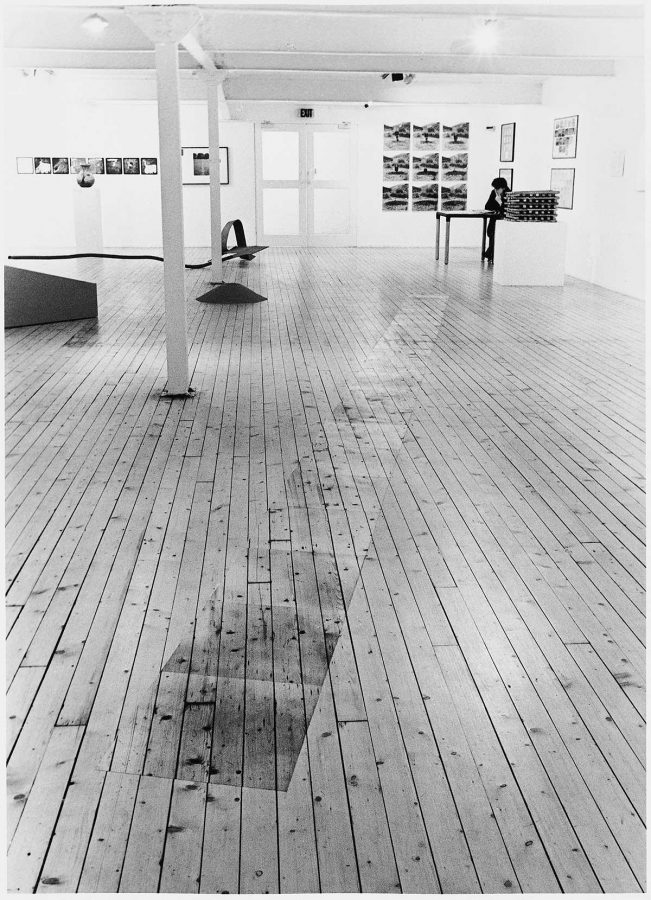
Images in order of appearance:
Victor Burgin, Belledonne, 2016 (Screenshots from projection work)
Victor Burgin, Prairie, 2015 (Screenshots from projection work)
Victor Burgin, US 77, 1977 (Panel from a set of 12, black and white silver gelatin prints with
texts, 100 x 150 cm each)
Victor Burgin, Young Oaks, 2020 (Diptych from a set of 6, digital prints, 101 x 64 cm each,
and 1 printed text)
Victor Burgin, Photopath, 1967 (Black and white silver gelatin prints attached to the floor,
dimensions variable)
Notes
1. John Barrell, The Dark Side of the Landscape. The Rural Poor in English Painting 1730-1840, Cambridge, Cambridge University Press, 1983, p. 16.
2. David Lapoujade, l’altération des mondes. Versions de Philip K. Dick, Paris, Les Éditions de Minuit, 2021, pp. 71-2. “Le futur, c’est l’homme qui n’est plus là, comme en témoignent ces zones abandonnées où la fin du monde a déjà commencé. Ces images sont strictement contemporaines des images clinquantes de la croissance industrielle et postindustrielle, des fantasmes de prospérité et de luxe qui les masquent temporairement, les repoussent à la périphérie. Le luxe – mortuaire – n’a d’ailleurs qu’une fonction : dissimuler la misère sous son éclat aveuglant.”
3. Artistic Representation and Politics. An Exchange between Victor Burgin & Hilde Van Gelder’, A Prior Magazine, # 20, 2010 (92-116), p. 104 (republished in: The Routledge Companion to Photography Theory, ed. by Mark Durden and Jane Tormey, Routledge, Oxon, New York, 2020, 371-384).
4. Jacques Rancière, The Politics of Aesthetics. The Distribution of the Sensible, London, New York, Continuum, 2011, pp. 30, 60, 87-88.
5. Walter Benjamin, The Arcades Project, ed. by Rolf Tiedemann, Cambridge, Mass., Belknap Press of Harvard University Press, 1999, p. 9.
6. William Gibson, Neuromancer, New York, Berkley Publishing Group, 1989, p. 128.
7. Jacques Rancière, op. cit., 65.
8. Victor Shklovsky, ‘Art as Technique’, in Lee T. Lemon, Marion J. Reiss (eds), Russian Formalist Criticism: Four Essays, trans., Lincoln, University of Nebraska Press, 1965, pp. 3-24.
9. Nicolas Royle, The Uncanny, Manchester, New York, Manchester University Press, 2003, pp. 5-7.
10. Julia Kristeva, Strangers to Ourselves, New York, Columbia University Press, 1991, p. 191.
11. Walter Benjamin, ‘The Author as Producer’, in Victor Burgin (ed.), Thinking Photography, London and Basingstoke, Macmillan, 1982, p.17.
12. Jean Laplanche and Serge Leclair, ‘The Unconscious: a Psychoanalytic Study’ (1961), in Jean Laplanche, The Unconscious and the Id, London, Rebus, 1999, p. 259.
13. J. Laplanche and J.-B. Pontalis, Fantasme Originaire, Fantasme des Origines, Origines du Fantasme, Paris, Hachette, 1985, p. 71.